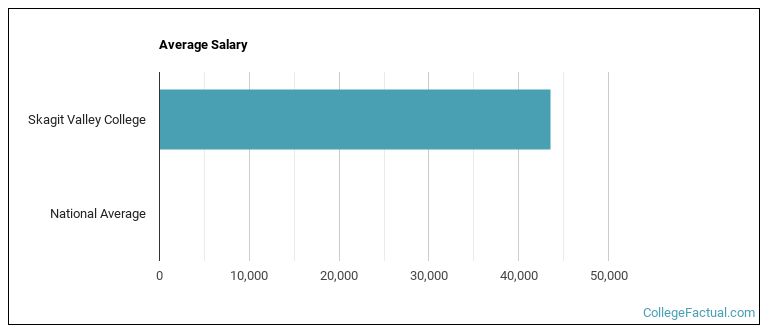 by our College Data Analytics Team
by our College Data Analytics TeamCollege Factual analyzes over 2,000 colleges and universities in its annual rankings and ranks them in a variety of ways, including most diverse, best overall quality, best for non-traditional students, and much more.
Skagit Valley College was awarded 1 badge in the 2025 rankings. The highest ranked major at the school is nursing.
Explore the best ranked schools for the programs you are most interested in.
Skagit Valley College landed the #1,928 spot in College Factual's 2025 ranking of best overall colleges in the United States. The higher ed experts analyzed 2,152 colleges and universities across the nation to determine this ranking.
Skagit Valley College also holds the #45 spot on the Best Colleges in Washington ranking.
If you are worried about getting into Skagit Valley College, don't be. The school has a liberal open admissions policy, which means you only need to meet basic requirements in order to be admitted. Still, be sure to submit a complete application and provide any other requested materials.
The student to faculty ratio is often used to estimate how much interaction there is between professors and their students at a college or university. At Skagit Valley College, this ratio is 17 to 1, which is on par with the national average of 15 to 1. That's not bad at all.
Another measure that is often used to estimate how much access students will have to their professors is how many faculty members are full-time. The idea here is that part-time faculty tend to spend less time on campus, so they may not be as available to students as full-timers.
The full-time faculty percentage at Skagit Valley College is 100%. This is higher than the national average of 47%.
During the 2017-2018 academic year, there were 4,227 undergraduates at Skagit Valley College with 2,357 being full-time and 1,870 being part-time.
| $0-30 K | $30K-48K | $48-75 | $75-110K | $110K + |
|---|---|---|---|---|
| $5,216 | $6,352 | $8,042 | $11,474 | $13,795 |
The net price is calculated by adding tuition, room, board and other costs and subtracting financial aid.Note that the net price is typically less than the published for a school. For more information on the sticker price of Skagit Valley College, see our tuition and fees and room and board pages.
It's not uncommon for college students to take out loans to pay for school. In fact, almost 66% of students nationwide depend at least partially on loans. At Skagit Valley College, approximately 5% of students took out student loans averaging $6,063 a year. That adds up to $24,252 over four years for those students.

See which majors at Skagit Valley College make the most money.
Get more details about the location of Skagit Valley College.

Contact details for Skagit Valley College are given below.
| Contact Details | |
|---|---|
| Address: | 2405 E. College Way, Mount Vernon, WA 98273 |
| Phone: | 360-416-7600 |
| Website: | www.skagit.edu/ |
| Most Popular Majors | Bachelor’s Degrees | Average Salary of Graduates |
|---|---|---|
| Liberal Arts General Studies | 324 | NA |
| Allied Health & Medical Assisting Services | 107 | NA |
| Teacher Education Grade Specific | 91 | NA |
| Nursing | 73 | NA |
| Practical Nursing & Nursing Assistants | 59 | NA |
| Computer Software & Applications | 35 | NA |
| General Business/Commerce | 30 | NA |
| Natural Resource Management | 28 | NA |
| General Physical Sciences | 28 | NA |
| Vehicle Maintenance & Repair | 24 | NA |
Online learning is becoming popular at even the oldest colleges and universities in the United States. Not only are online classes great for returning adults with busy schedules, they are also frequented by a growing number of traditional students.
In 2022-2023, 2,608 students took at least one online class at Skagit Valley College. This is an increase from the 2,473 students who took online classes the previous year.
| Year | Took at Least One Online Class | Took All Classes Online |
|---|---|---|
| 2022-2023 | 2,608 | 321 |
| 2021-2022 | 2,473 | 1,608 |
| 2020-2021 | 3,181 | 2,922 |
| 2018-2019 | 1,906 | 806 |
Footnotes
*The racial-ethnic minorities count is calculated by taking the total number of students and subtracting white students, international students, and students whose race/ethnicity was unknown. This number is then divided by the total number of students at the school to obtain the racial-ethnic minorities percentage.
References
More about our data sources and methodologies.